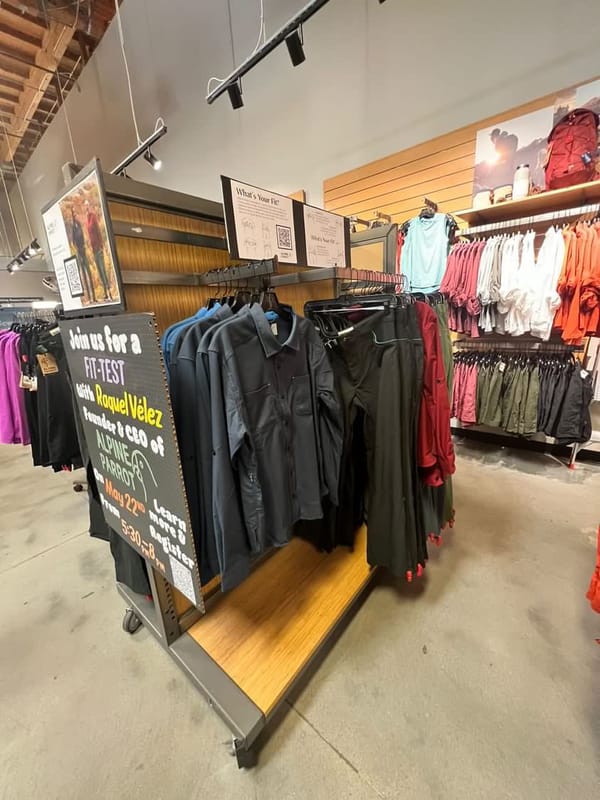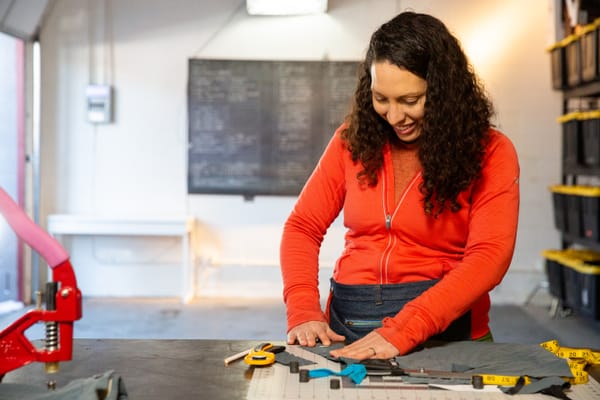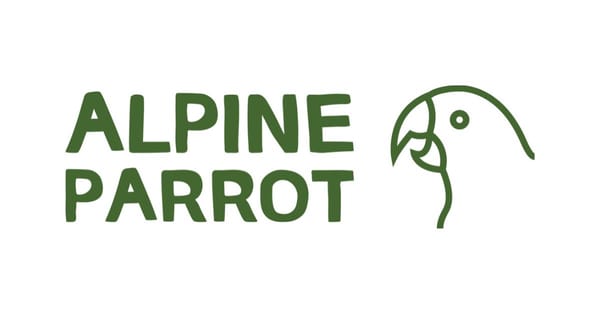Beyond the Block
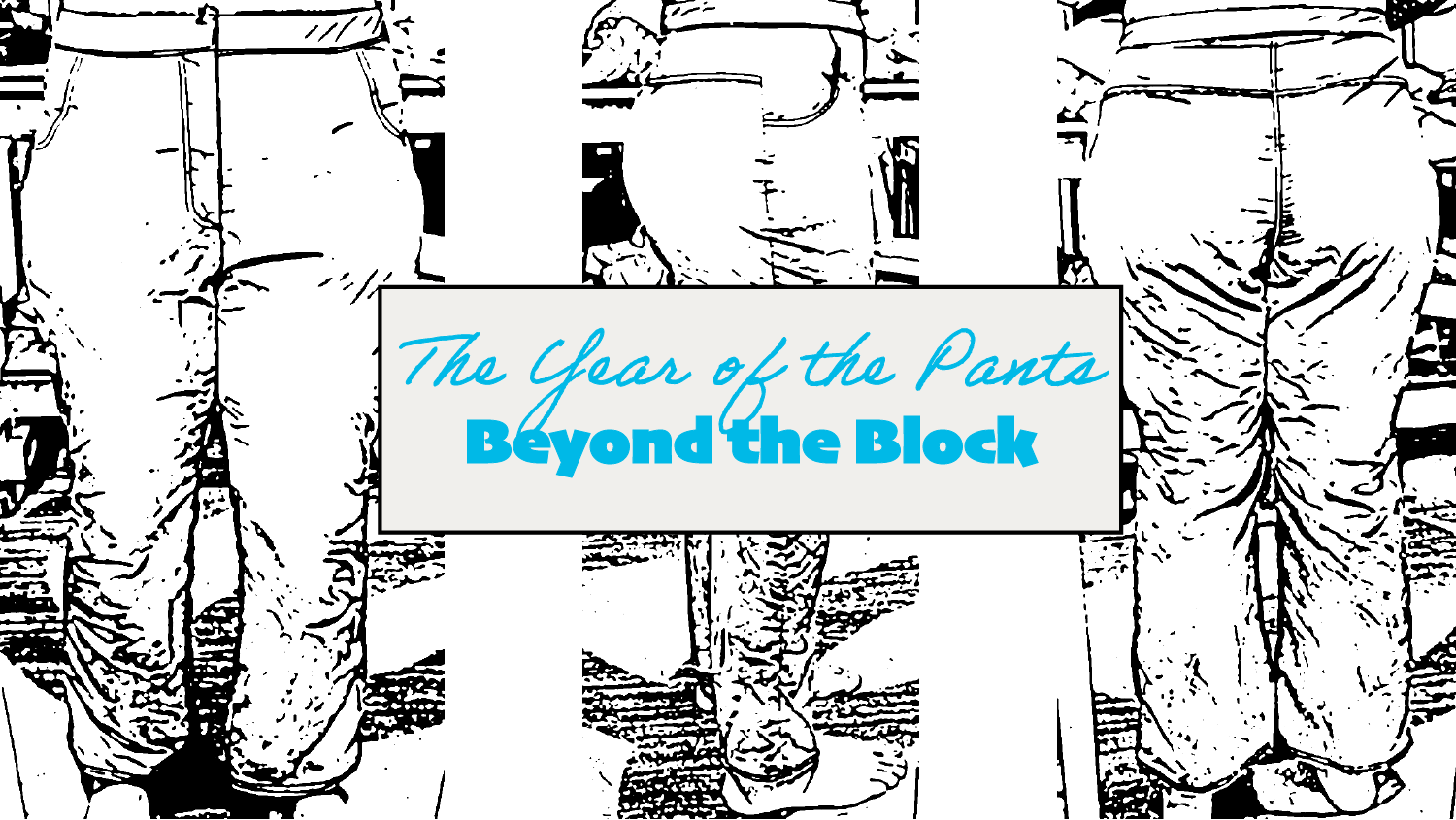
This post is part of a series called 2020: The Year of the Pants. Catch all of the posts via the YOTP tag.
Once we've got the block fitting pretty well, we can start adding details!
The key to good software is to make it work, then make it pretty, then make it fast. In apparel, fitting the block is making it work, adding design details is making it pretty, and then productionizing the pattern to be efficient in cutting and sewing is making it fast.
Today, let's talk about adding design details!
Step 1: Mark on the muslin where you want your waistband, pockets, fly, etc to go. Put the muslin back on, as it's easier to figure out the right proportions when they're on your body.
Step 2: Measure the lines and redraft the pattern with all the new pieces (again, I won't be sharing how to do that - please refer to your preferred patternmaking course or ask me where I did mine 😉)
Step 3: Cut, sew, and try it on!
Below is my first prototype out of non-muslin fabric.
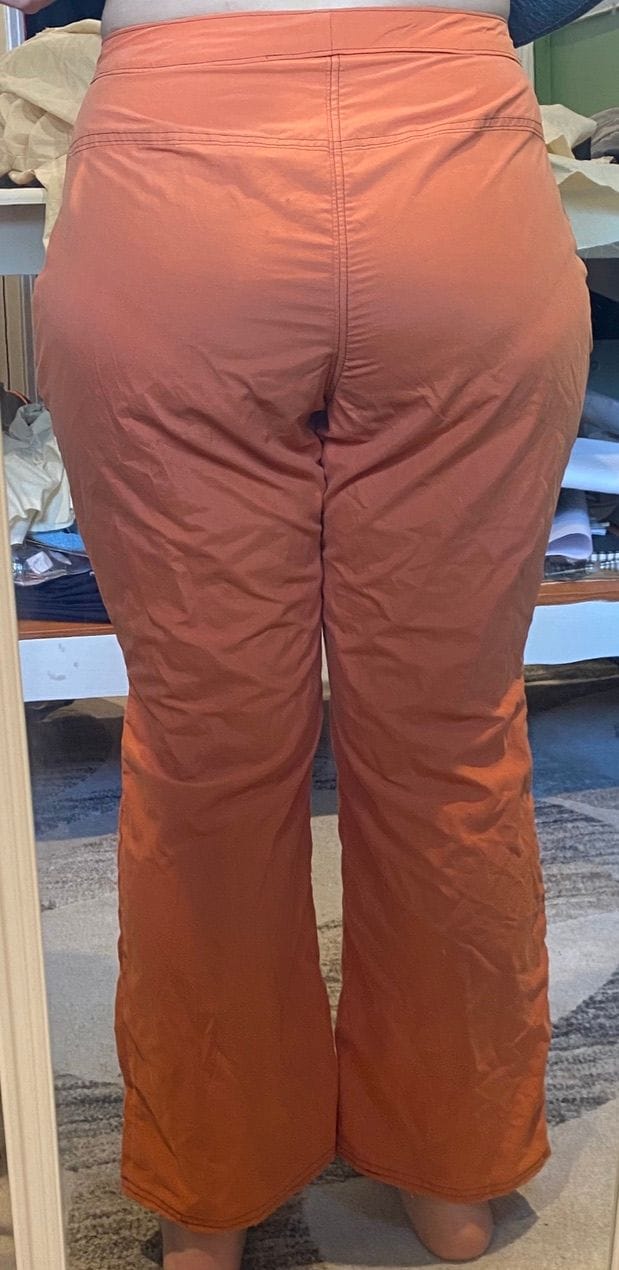
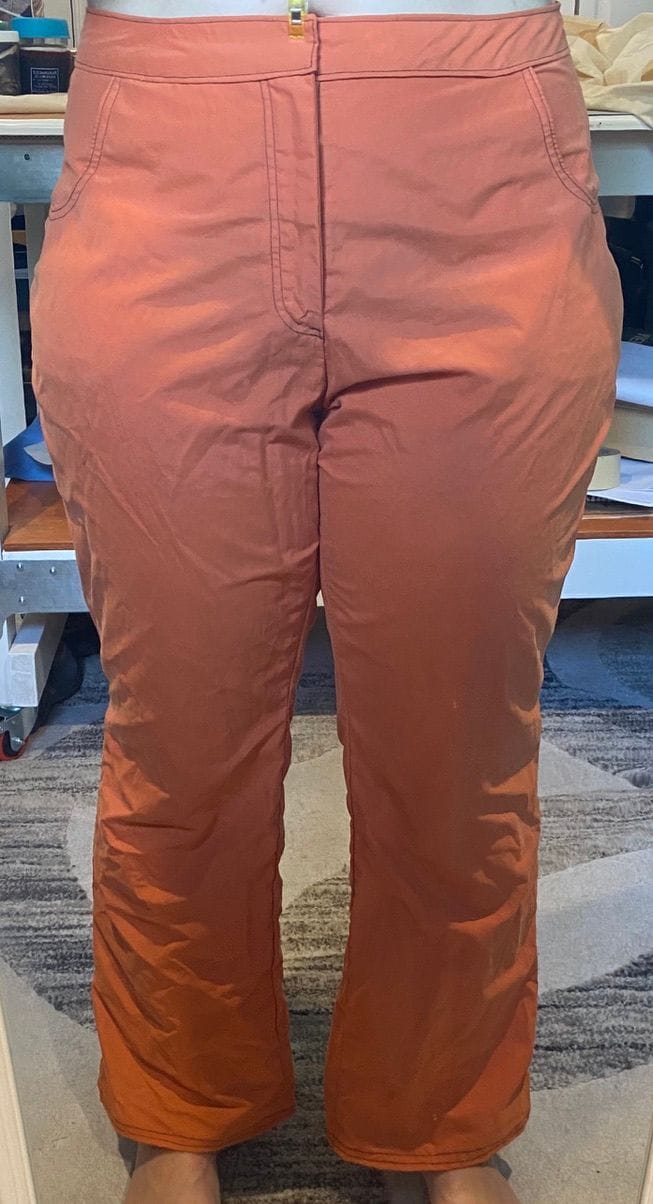
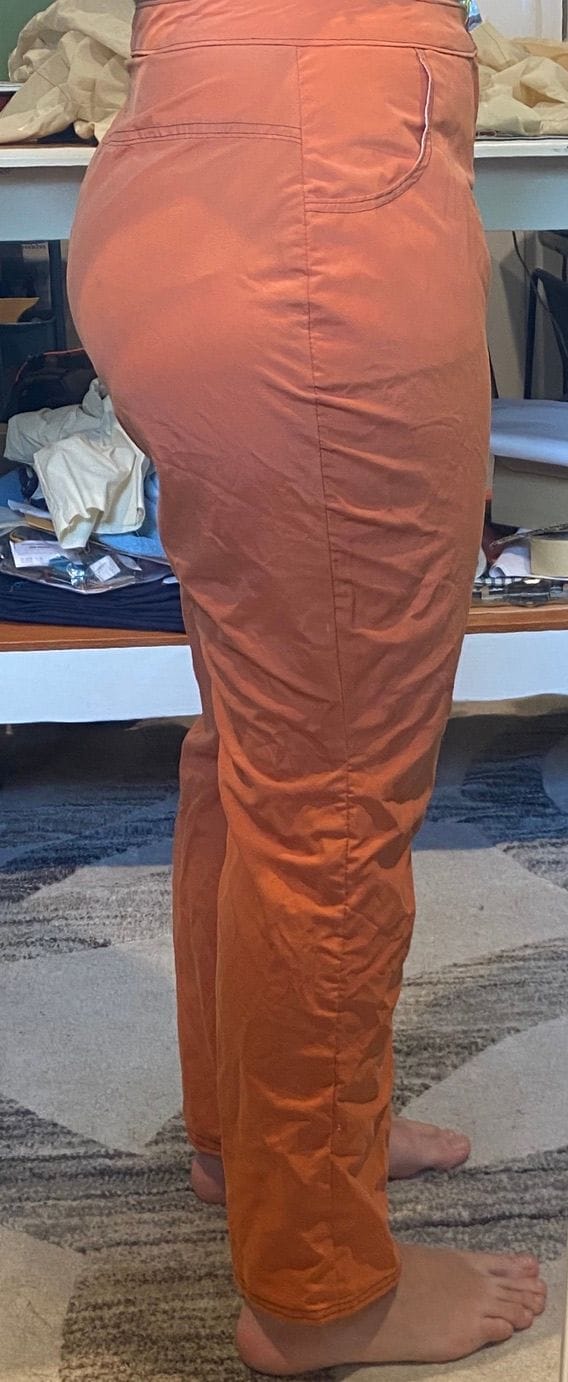
Non-muslin prototype #1 - they look pretty good, no? 😄
Notice that I'm missing back pockets, but I've got front pockets, a zip fly, and a curved waistband. The fit is okay, but it's too tight in the booty and the front crotch will haunt me forever.
The thing that's keeping it from being a wearable muslin, however, is due to a combination between the fabric and the pattern: the fabric itself has zero stretch, and the pattern doesn't accommodate for the variation in body mass during movement. In other words, the pants fit pretty okay while I'm standing still, but I can't move in them at all!
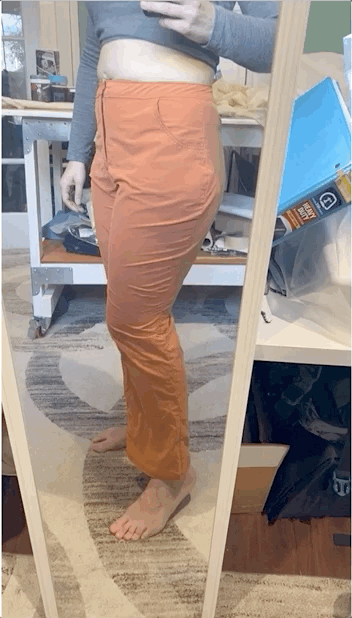
In the video above, you can see that my range of motion is rather limited. I won't go into a full biomechanical lecture of the human body, but suffice it to say: when muscles contract and extend, they change shape. How is anyone going to go hiking in that?? (Also, forget sitting down. It fails that integration test completely, even if I didn't catch video of it 😉)
Now, some of you may look at this and go OH NO IT'S OVER WE FAILED! And I would say: I KNOW, RIGHT?! NOW WE GET TO FIX IT! 💪🏽
Remember: prototyping is all about quick iteration! We don't learn if we don't make mistakes - otherwise, how will we know when we've done something correctly?
For the next step, I have a couple of options to test out:
- Change the fabric. Fabric with stretch components (usually a result of lycra/elastane being added to the weave of the cloth) will adapt to the changes in musculature during movement.
- Change the pattern. Adding more length in the front of the leg will allow the fabric to adjust to the changes in musculature during movement.
In the next post, I'll share some of the things I tried - both in fabric and pattern designs - I'm excited to share them with y'all! 😄

